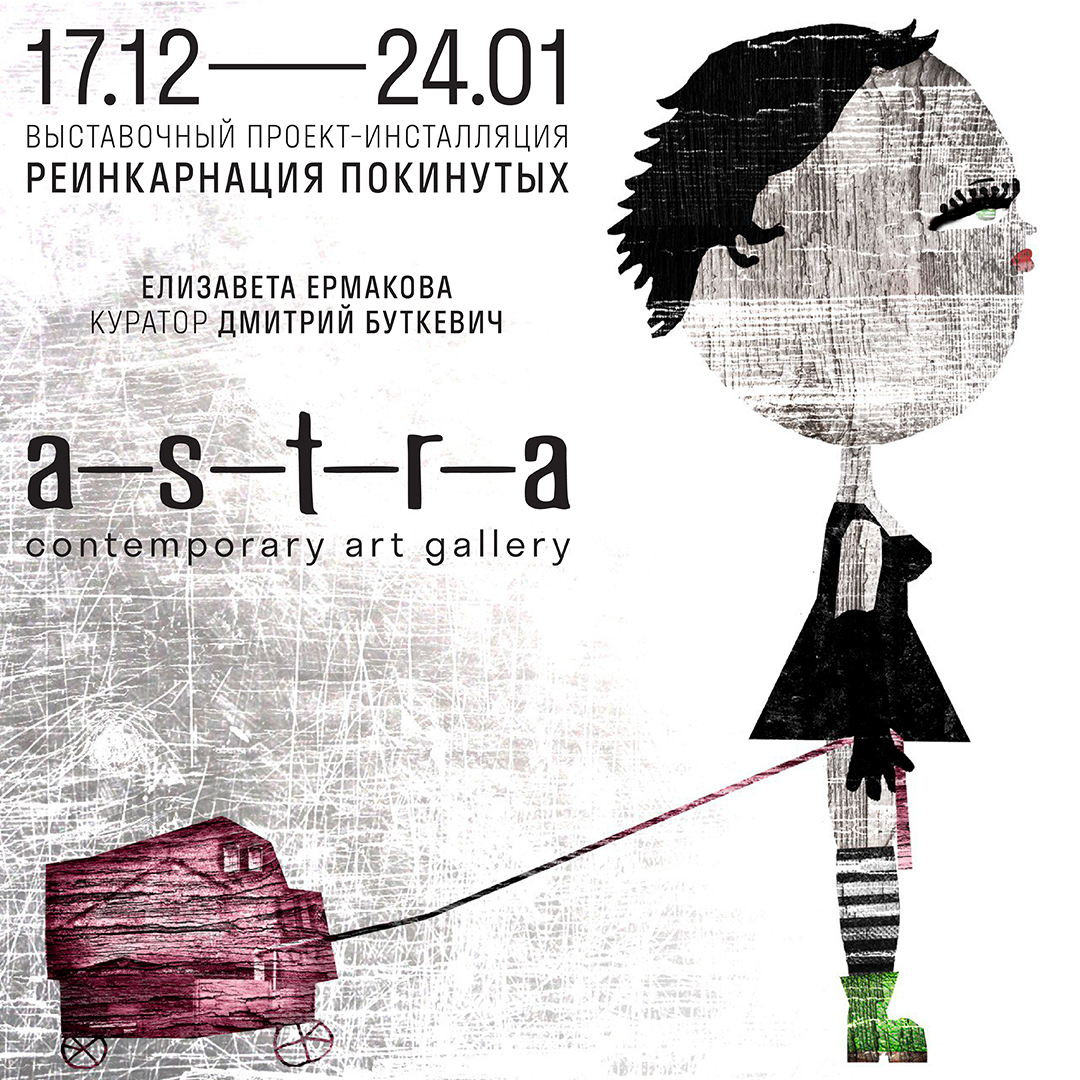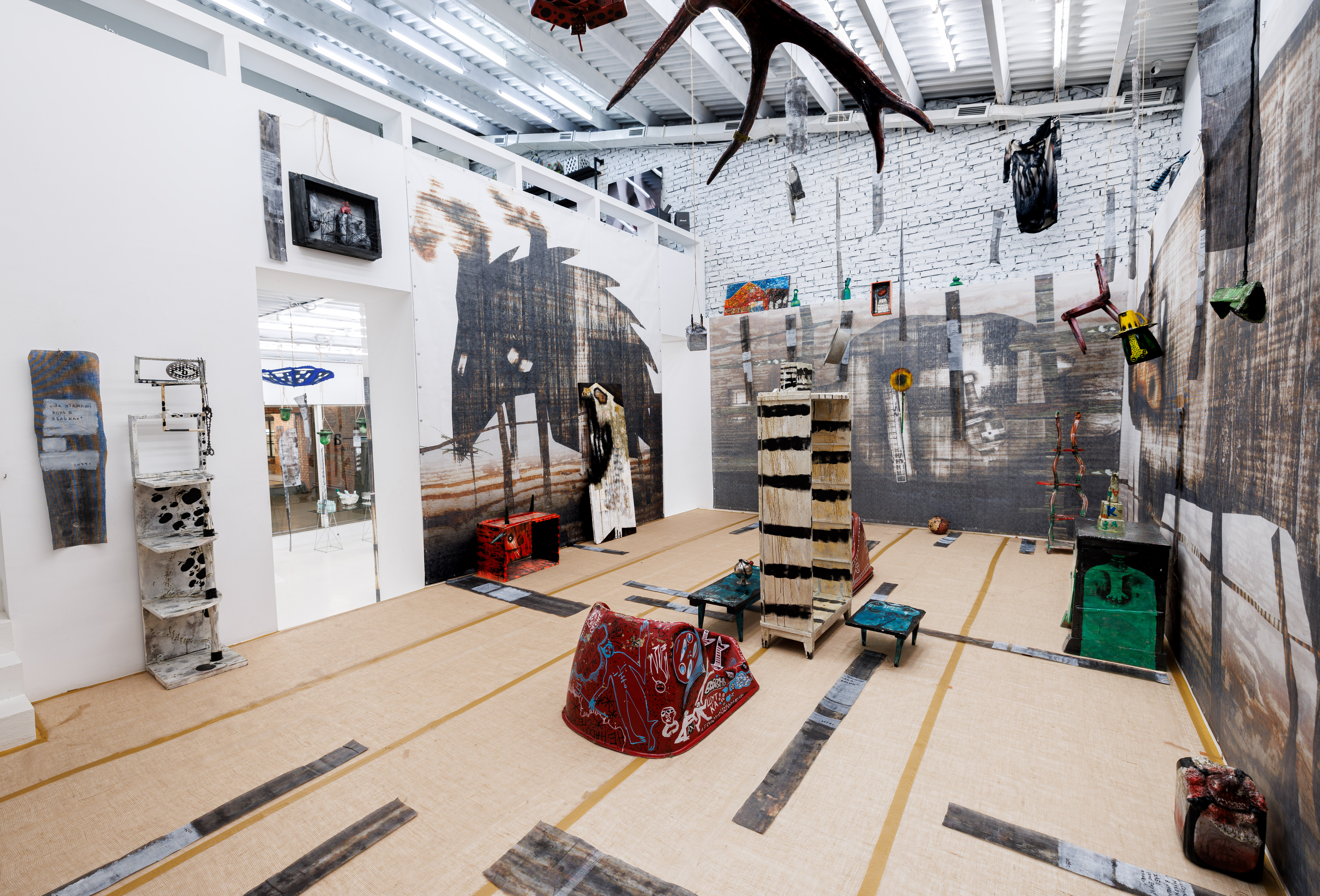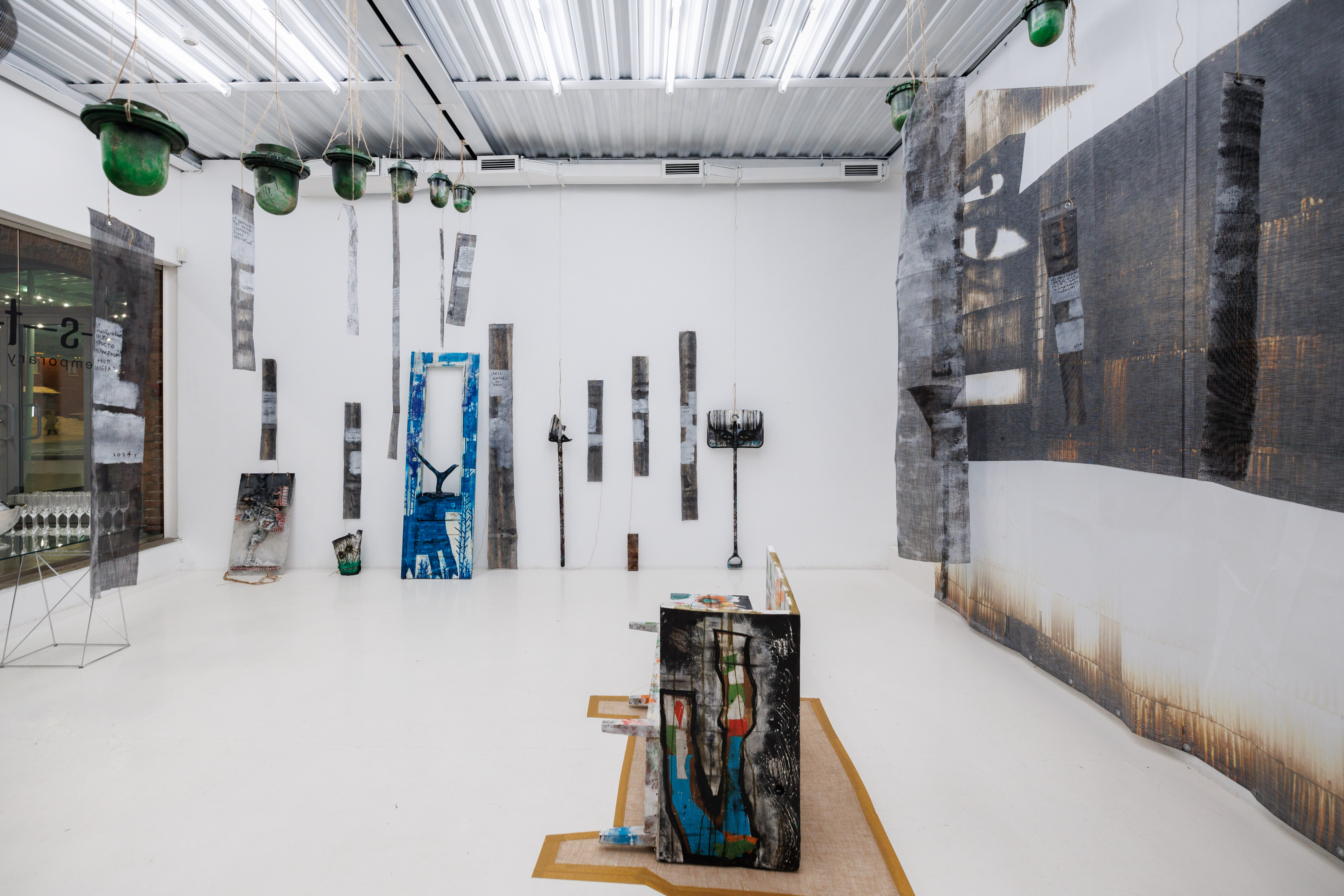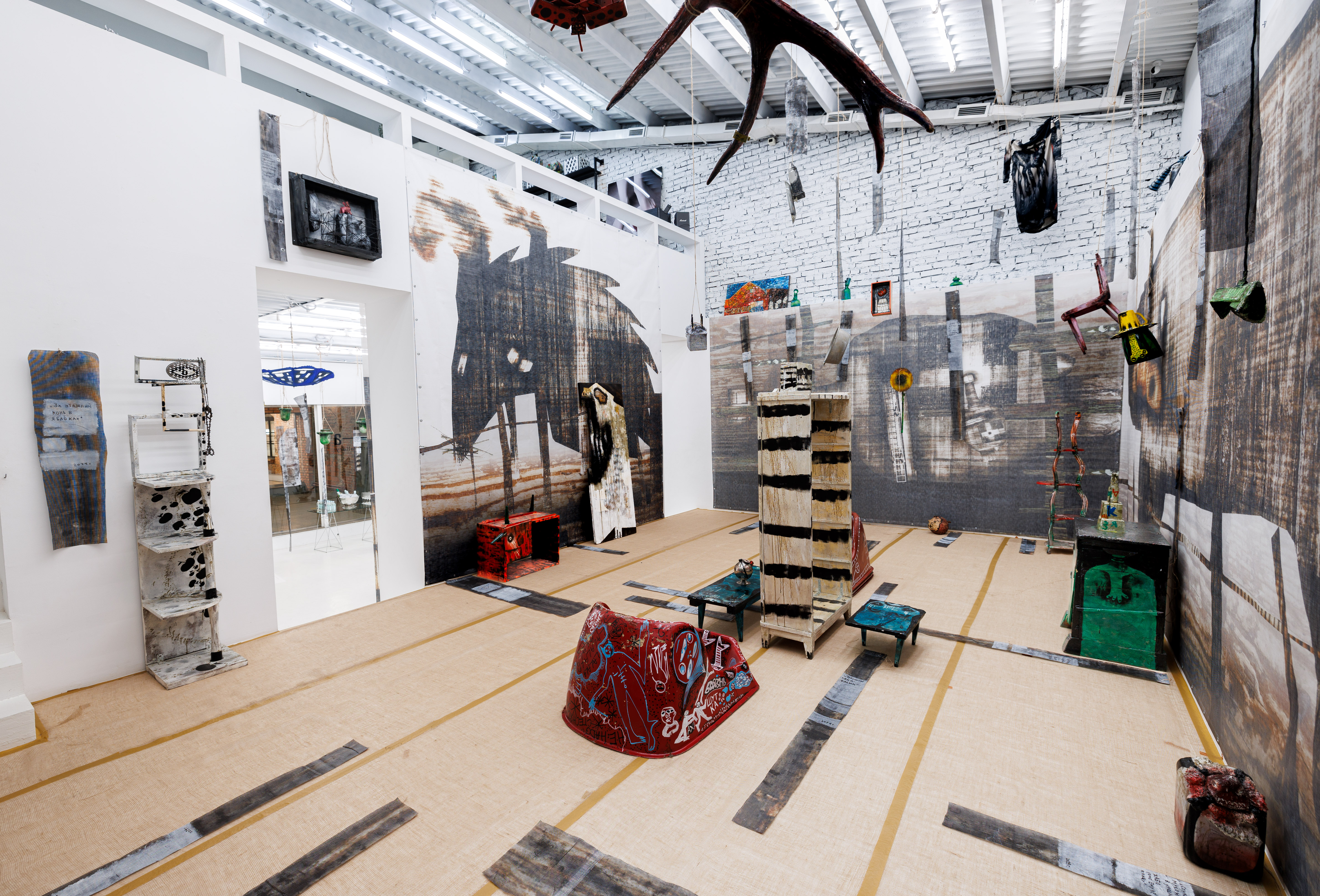Reincarnation of the abandoned
Exhibition project-installation by Elizaveta Ermakova
curator Dmitry Butkevich
Center for Contemporary Art Winzavod, entrance H8
12/17/2024 — 01/24/2025
In the village God does not live in the corners,
as scoffers think, but everywhere.
He sanctifies the roof and dishes
and honestly divides the doors in half.
In the village he is in abundance. In the cast iron
he cooks lentils on Saturdays,
dances sleepily on the fire,
winks at me as an eyewitness.
I. Brodsky

"According to Heidegger's Being and Time, man is "homeless" in this world, he is "thrown" into it without any meaning and finds himself finite, insignificant and vulnerable. Burdened, lost, abandoned, man flees into "everyday life". Escaping from his own being, he wants to find his home.
Everyday life, into which man flees, is also tangible. It becomes just as finite and vulnerable when man leaves it, and comes to life if he returns.
A deserted house is equal to a homeless person. Just like a lost/abandoned piece of furniture or interior, it is devoid of any meaning until man discovers it.
In every object, a memory is sealed, which is revealed only in contact with a living being. At the moment of contact, one can imagine, visualize the life of the object up to this second. Every crack in a wooden chair, every centimeter of peeling plaster on the wall, is wrinkle and imprint of the events experienced. Just as a person's face carries the emanation of his soul, we also clearly see the history of an object when we look at it. And taking this object with us, opening its memory, everyone will see and read it in their own way, based on their life experience.
By cleaning an object from dirt, dust, covering it with a new layer of paint, we put our mark on it, on the one hand, we give it a new life, and on the other hand, we put another layer of skin on many other such layers. Akin to a certain word, pronounced countless times, which, as a result, loses its original essence, becoming “naked” - a simple set of sounds. In this new “meaningless” quality, the object appears before a person as a clean sheet on which you can depict anything different from its original purpose.
The progress of work on the installation is directly related to the search for such abandoned, discarded pieces of human comfort, and with attempts to guess and tell their story, combining the pieces into a single canvas, illustrating that very lost hearth.
The understanding that this particular thing needs to be animated comes intuitively and has no logical beginning, only an aesthetic one. The only pattern in the search is the choice of places where objects can be found.
The main place of "excavations", the starting point, is the city of Rybinsk (Yaroslavl region), namely - an old abandoned telephone station. This place is a palace of forgotten souls and frozen memories / sounds / conversations, filled with objects that were abandoned suddenly, although, perhaps, could have served for many more years.
The second point is a sawmill in the village of Leo Tolstoy (Kaluga Region). It is filled with things that have objectively fallen into disrepair and can no longer serve a person in the capacity in which they were originally created.
The third point is the urban environment, namely, areas near garbage bins in Moscow, Rybinsk and the city of Suzdal in the Vladimir Region. The objects that end up there are often subjectively out of order (for example, a chair that the owners are tired of, or a hat with earflaps of a former "demobilized soldier", or a children's album with drawings that is of no value to the author in adulthood).
Any thing that evokes a feeling or some kind of inspiration can become an "object". Often, things perish together with the era to which they belonged, they bear a characteristic imprint left by the time in which they were born. This imprint is visible from afar.
Each found object has its own thread, woven from an individual set of memories and images. This thread connects the thing and the final result (what the object will look like at the end of the work). The result is always intuitive and most often echoes the "living" forms (animals, people, plants).
Reincarnation of objects or "Foundlings" is not bringing them to a "better" form, but an attempt to present their experience of existence, history, and to present it illustratively, to give them new "clothes."




